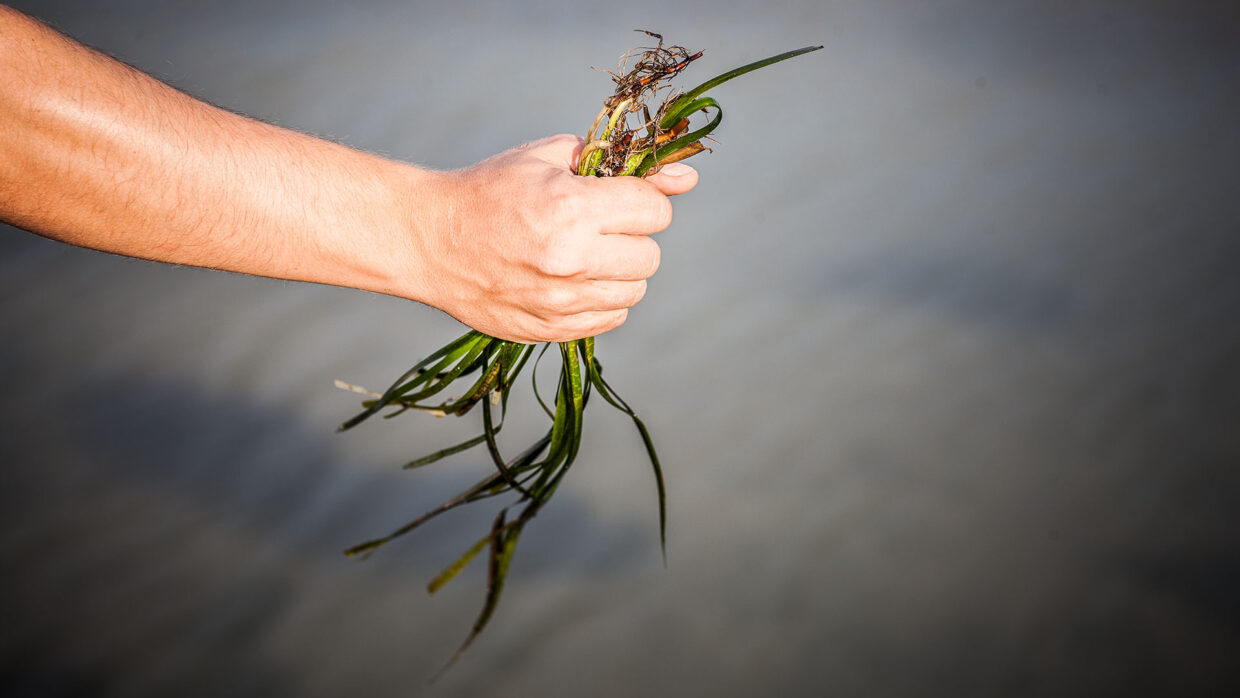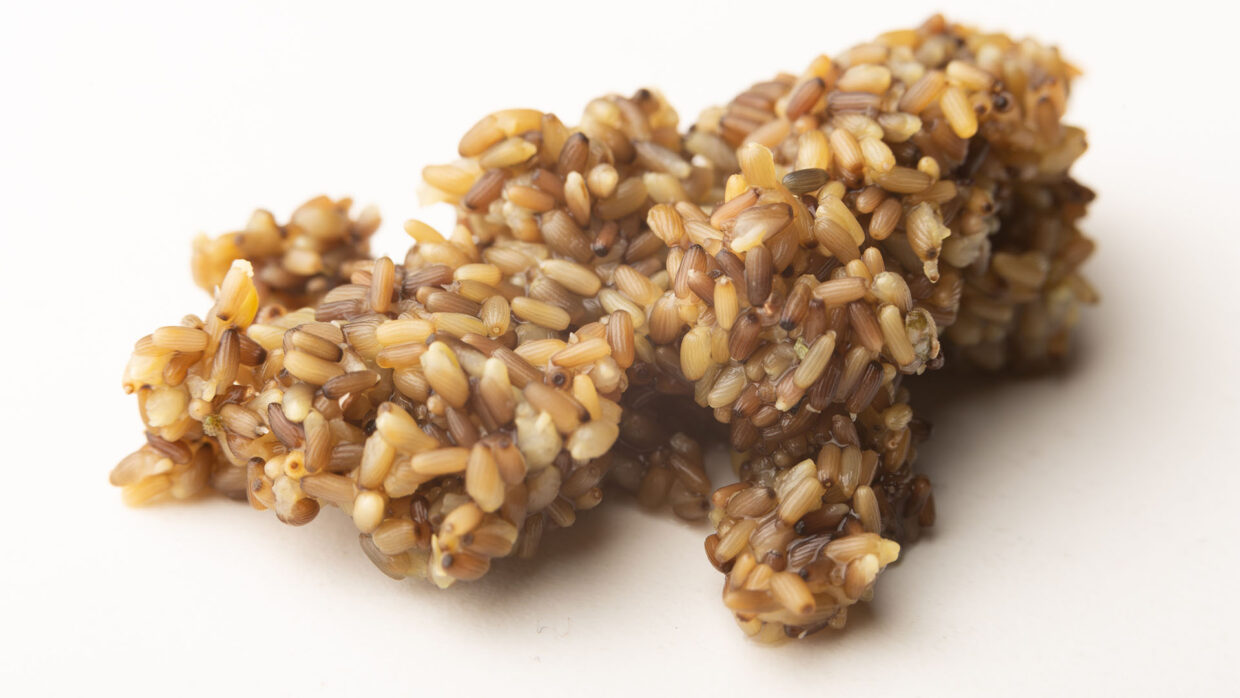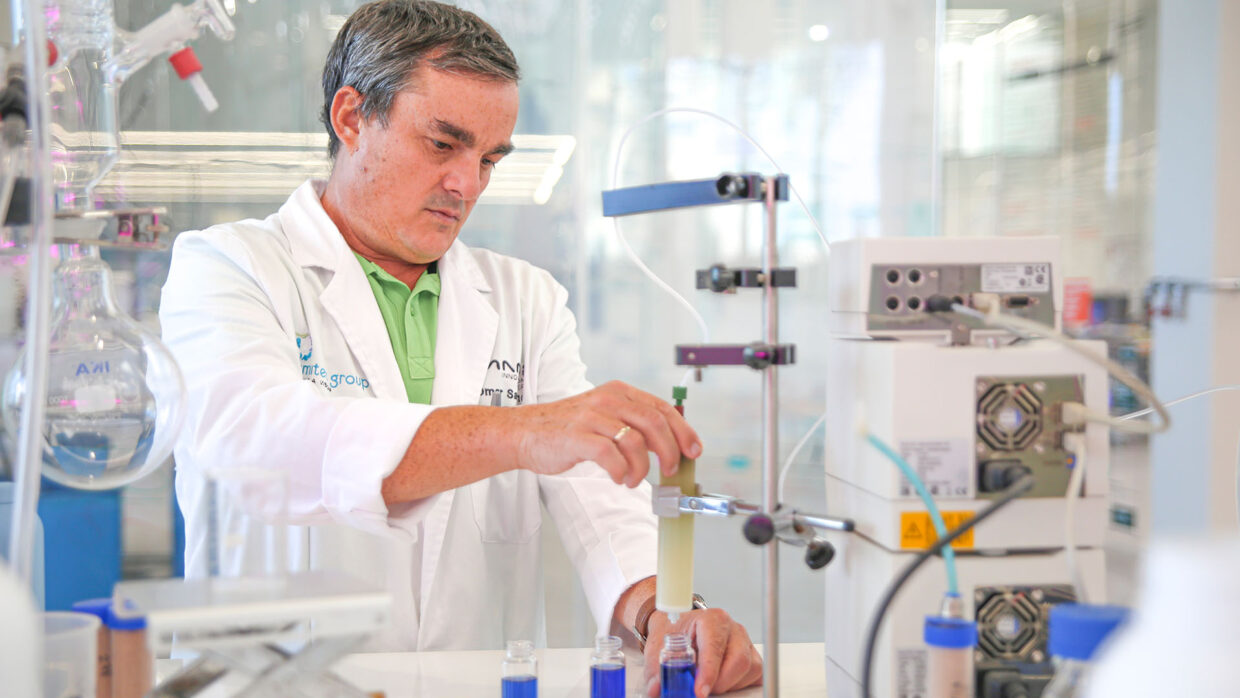Juan Martín tells of the time when the native Seri or Comcaac people named the month of April “moon, when the seeds of marine wheat ripen.” The biologist goes on to tell us that, at that time, “released from the seabed, the plant was carried by the waves which arrived at the coast of the narrow Infiernillo Channel, between the Gulf of California and Tiburón Island.” The sandmen, who lived near the Cortés coast and in the eastern foothills of the Sonora desert, dried out the plants and shook them to harvest the grain.
Memoirs written by the explorer Álvar Núñez Cabeza de Vaca in the 16th century confirm that the flour acquired from the fruit of this aquatic plant played an important role in the traditional diet of the indigenous tribe. It was used for making cakes and hot drinks (atoles). Proof of Zostera marina’s nutritional value for the indigenous Seri people could be found in a Science magazine article (July 27, 1973), a copy of which landed in Ángel León’s hands many years later, giving him the idea to make the most of these health benefits in his cooking.
The grain that grows under the sea
Zostera wasn’t completely unfamiliar to Mr Martin. It became known to him when he was working on restoring some marshlands four years ago. “It can be found along most coasts in the northern hemisphere, apart from at the North Pole,” says Mr León, who is known as the “chef of the ocean” and runs Aponiente, a restaurant with three Michelin stars that specialises in seafood.

“Chef del Mar” (left) and Félix García, CEO at Kimitec (right).
This is not a type of alga, but a seed-bearing plant, or phanerogam, of which 67 different types exist in the world. It is a kind of grass which has become accustomed to growing submerged in water, from which the plants evolved to repopulate the land. The grass gets its nutrients from the saltwater to produce seeds, which Mr León and his team have studied to check are safe to include in a human diet, too.
“We can confirm that the nutritional properties of Zostera marina are superior to those of rice and wheat,” confirms Mr León. He arrived at this conclusion after running extensive experiments over the past few years with his team, of which Mr Martín is a member. “We have to take into account the following factor: Only 2.5% of the water on Planet Earth is freshwater, and this is the first time a plant with so many benefits has been harvested from saltwater,” the chef adds.
World pioneers in cultivation
“We’ve copied the physicochemical conditions in estuaries, seas and oceans, from which the plant comes, so that we can recreate them in shoreline areas,” explains Mr Martin. “This is the first time that anyone has closed the entire life cycle of the Zostera plant, which grows within the controlled environment of the estuary.” The Puerto Real estuary is a deep body of seawater, harnessed by human hands to extract its salt and later to breed fish in the marshes of the Cádiz coast.
“We have already grown Zostera in three pilot experiments, where we recreated different conditions; changing the depth, current, and substrate,” says Mr León, who worked on the projects as a seagrass farmer. “We reused abandoned spaces across the Cádiz province where we could bring in sea water through gates, thanks to the rising and lowering tides.”
Architect of ecosystems
The plant is perennial, and its ecological processes occur by carbon fixation. It produces oxygen which dissolves into the water and settles at the bottom of the ocean. It reduces turbidity (water cloudiness) by holding sediments and solids in suspension. When farmed, the plant is submerged in a mix of waters which imitates the effect of the tides, and just the presence of Zostera creates a place of refuge for associated fauna, which favour the environmental conditions below the water.
Throughout the plant’s entire root system grow micro-organisms whose metabolic activity takes place in the silt. And the above-ground part of the plant is home to species that are very important to the ecosystem, like needlefish and seahorses, as well as several other species of fish, crustaceans and other aquatic organisms. That’s why no fertilisers, plant protection products or additional nutrients are used.
As with all areas where plants can be found in a high concentration, Zostera attracts predators that consume its grain before it is fully grown. To control these predators’ carnivorous fish have been integrated into the system. When the water temperature increases suddenly, or the heat from the summer sun is too much, the plant gets covered in epiphytes or macroalgae – to avoid this, they are combed out every day.
Priority: Genetic material

Salt and fish were the fruits of the “esteros” in Cádiz. Some populations have cultivating Zostera marina.
The Zostera marina farmer harvests the seed by hand. The plant’s existence is at risk, and, in its first pilot crops, reproduction of seeds was preferred. “There isn’t enough stock, and we are dependent on our own seeds,” says Mr Martin, the biologist. “We have focused on replicating the plant material by selecting different genotypes we found interesting with regard to size, germination stage, and nutritional properties.”
Mr León highlights the upcoming challenges: Maintaining the natural distribution of the plant; keeping the crops within reach of any aqua culturist, salt trader, marine or seafood farmer; and increasing the scale of extensive production.
“This last challenge is what we are working on with Aponiente: Turning the idea of harvesting Zostera into an industrial reality, which is part of the project we have on the go with Ángel,” says Félix García, CEO of Kimitec and president of the MAAVi Innovation Centre.
This is the largest centre of bio-technological investigation into natural solutions in Europe. The two have already begun their collaboration, investigating varieties of the aquatic plant in vitro. Both partners have set up a platform to extract substances and molecules from the sea, and to use them for food supply as alternatives to those grown inland.
WHY IS THIS A SUPERFOOD?
Its average carbohydrate content is around 82% – more than 50% of which is starch. It has 13% protein (FAO score 71), less than 2% fat, and the rest consists of fibres and a high mineral content. These plants also hold high concentrations of B vitamins (B1, B2 and B3 at least) and essential fatty acids like Omega 3 and 6.






